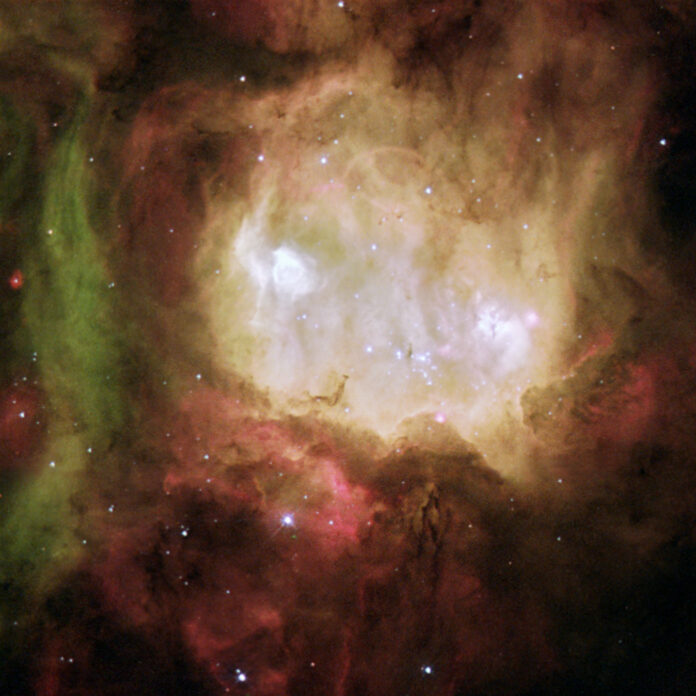
A Cosmic Phantom With Gleaming Eyes Stares Earthwards
Ever had the courage to gaze into the depths of space and encounter the mesmerising beauty of a nebula? A cosmic phenomenon resembling a phantom, with two luminous eyes, stares back from the void of space.
This captivating phantom is none other than NGC 2080, also known as the “Ghost Head Nebula.” An emission nebula located in the southern constellation of Goldfish, NGC 2080 is situated approximately 168,000 light years from Earth, in the Large Magellanic Cloud. The Large Magellanic Cloud is a neighbouring galaxy to our own Milky Way, possessing a mass equivalent to ten billion suns and is visible to the naked eye from the southern hemisphere as a faint cloud against the night sky.
The “Eyes” of the Ghost Head Nebula
Primarily a star-forming region, the Ghost Head Nebula is located slightly south of the nebula 30 Doradus. The remarkable ‘eyes’ of this spectral phenomenon are in fact two glowing spheres of hydrogen and oxygen. The left sphere – or A1 – was formed through the intense radiation and powerful stellar wind of a massive star. The right sphere, suitably named A2, contains more dust and hosts multiple massive stars. The stars within both A1 and A2 were formed in the last 10,000 years, as the gas clouds surrounding the newborn stars have not yet been disrupted by their radiant emissions.
Hubble’s Capture of NGC 2080
The photograph of NGC 2080 was captured back in 2010 by the Hubble Space Telescope. Various filters were implemented to distinguish specific regions of interest. The green light seen on the photograph’s left side emerges from glowing oxygen, which was triggered by the powerful stellar wind of a massive star located outside the frame. The red and blue nebulas are regions abundant with hydrogen gas, heated by nearby stars. Concealed within the white area in the centre are numerous warm, massive stars. The intense radiation from these stars has carved an ‘opening’ in the nebula.











